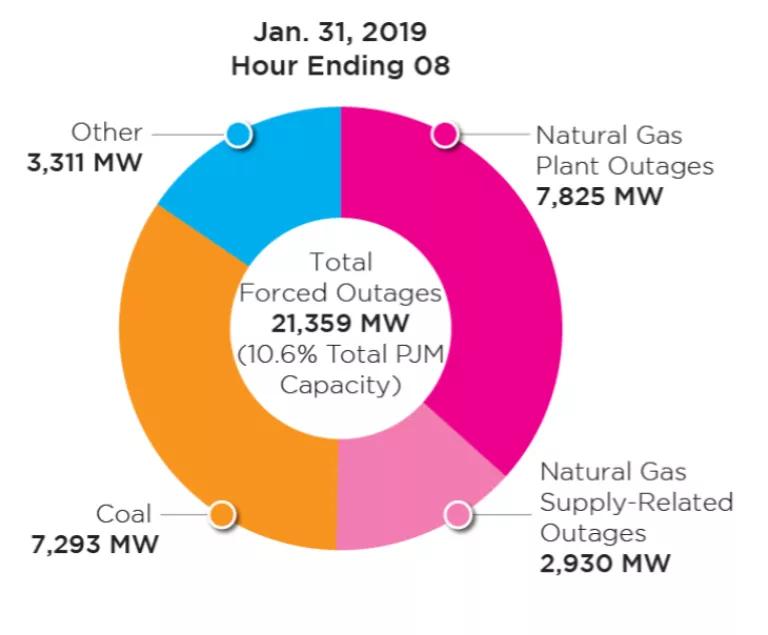While Power Plants Fail, the Grid Works

Fossil fuel plant owners hype their reliability, but when the weather turned bitterly cold in late January, coal and gas plants froze up. The polar vortex was a test for the power grid. When we needed them most, many of the very same power plants that are clamoring for a bailout failed. That’s not surprising, since the truth is those plants are losing money because they are some of the oldest, most expensive to maintain and operate, and least efficient machines on the system.
The two days of bone-chilling temperatures demonstrated one crucial fact: Grid operators can manage a nimble, green and affordable electric supply system with a range of resources. The old power plants looking for a handout have nothing to do with the reliability or resilience of the electricity system.

A lot of the failing coal plants are 50 or more years old. If they were cars, they’d have fins. And, just like cars, the oldest power plants are usually the least reliable. Meanwhile, the owners of these money-losing plants say they need help, and deserve it on the misguided argument that those plants are needed for grid reliability. This latest cold spell shows once again that this is nonsense.
Grid operator PJM reports that those same plants that need a bailout are the least reliable ones: In PJM, as many as 23 percent of plants facing retirement—nearly one in four—were out of commission during the cold snap. PJM noted, “Forced outage rates for retiring units ranged from 18 percent to 23 percent, this is approximately double the PJM RTO forced rates during the same peaks which ranged from 7.0 percent to 10.6 percent.” For comparison, the average power plant in PJM is unavailable 6.6 percent of the time.

Gas powered plants had their own issues. A number of gas fueled plants had to stop operations because their fuel supplies were cut off. This can happen when plant owners try to save money by using “interruptible” fuel contracts—that means they can lose their fuel supply to higher priority customers. Many of those plants are paid a lot of money because they’re supposedly needed for reliability, so it boggles the mind that they’re allowed to make fuel arrangements that get cut off when they’re needed most. If there ever was a near-emergency, those plant owners would face hefty penalties, but it looks like they’ve decided to take that risk.
On the 31st, one very large gas plant suddenly shut down not once, but twice in one day. If we wanted to make that dramatic, we could say grid operators had to scramble their emergency reserves to keep the lights on, but the reality is that sudden failures of fossil fuel plants are routine.
One tool for managing sudden power plant failures is industrial and commercial sites that are set up to quickly reduce their power use when needed. Often, those events come and go so quickly even the people in the affected buildings don’t know anything happened. That’s an important development: technology is at the point where consumption of electricity can be managed to match supply. With ubiquitous connectivity, an ever-expanding Internet of Things, and more and more plug-in electric vehicles, that’s a trend that’s only going to accelerate.
All these breakdowns bring us to the real point: The lights did stay on. The grid worked. That’s because the people who run the power grid spend a lot of time and effort planning a system around the strengths and weaknesses of the thousands of power plants in the country. That’s what a resilient and reliable grid will look like in the future: A variety of low-carbon resources and smart power users working together to keep the lights on.
The National Renewable Energy Lab has studied in detail how the power grid would work with as much as 80 percent of our power coming from renewables. The researchers found that with current technology, the grid remains reliable every single hour of the year. Dispatchable renewables like concentrating solar power and hydro combined with energy storage balance the ebb and flow of wind and solar, while demand response deals with short-term unexpected issues.
So, the next time you run into someone who thinks they’re the first to realize the sun goes down at night and the wind doesn’t always blow, just remember: If we can keep the power grid working with cranky old coal plants in the mix, we can keep it working with just about anything.



